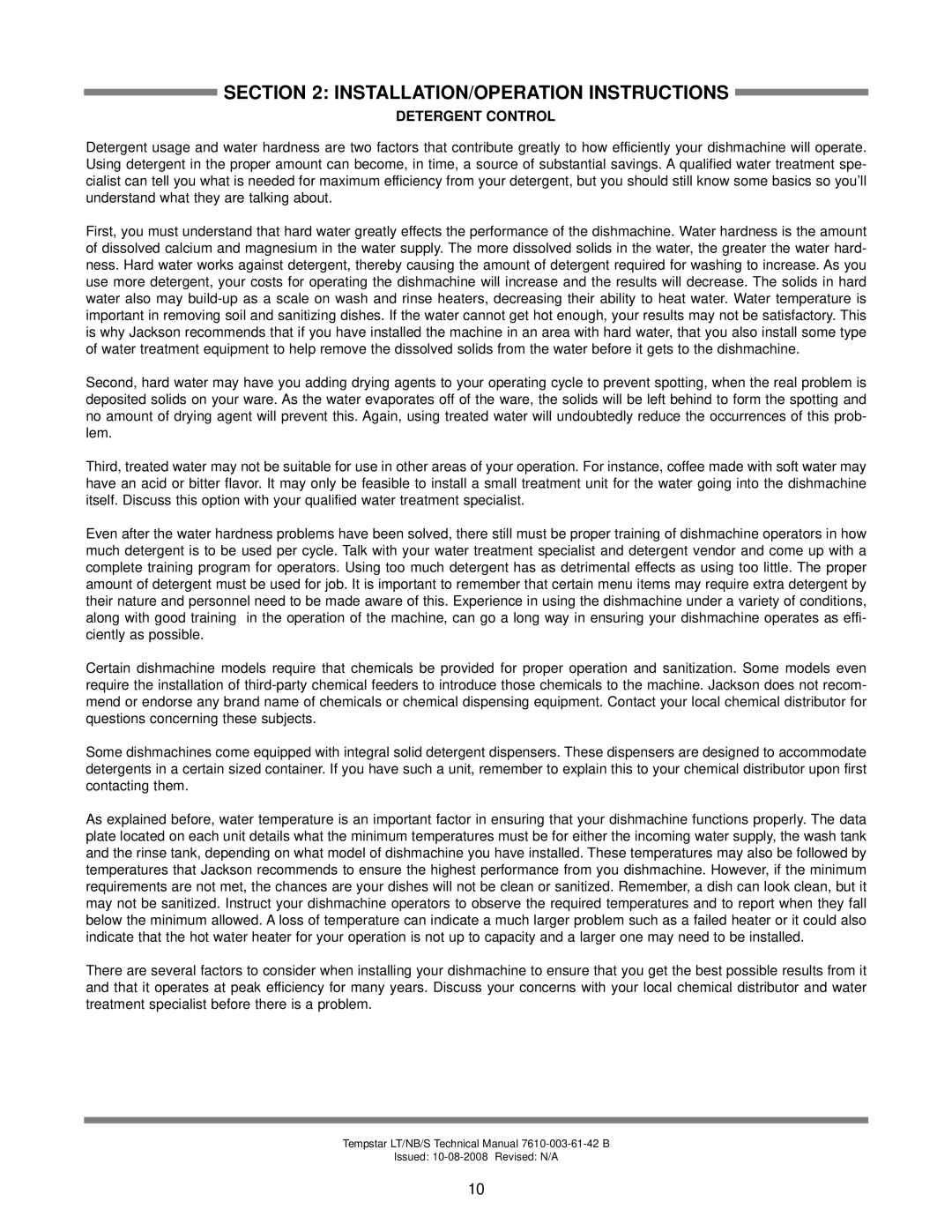Tempstar S specifications
The Jackson Tempstar S is a notable name in the realm of industrial heating systems, designed to provide efficient and reliable performance for various applications. Known for its advanced technology and user-friendly features, the Tempstar S stands as a true testament to innovation in heating solutions.At the core of the Jackson Tempstar S is its powerful heating capacity. This unit can efficiently deliver substantial heat output, making it suitable for large-scale operations. It employs a high-performance burner system that ensures optimal combustion efficiency, translating into reduced fuel consumption and lower operating costs. This energy efficiency is enhanced by advanced control systems that allow for precise temperature regulation.
One of the standout technologies integrated into the Jackson Tempstar S is its advanced control interface. Featuring an intuitive digital display, users can easily monitor and adjust settings. This allows for real-time data feedback, increasing overall usability and operational efficiency. Moreover, the system is designed to offer multiple programmable settings, accommodating a range of operational requirements. This versatility is complemented by robust safety features, including overheat protection and flame monitoring, ensuring that the unit operates safely under various conditions.
Another noteworthy characteristic of the Jackson Tempstar S is its construction. Built with durable materials, the unit is designed to withstand harsh industrial environments. Its compact design allows for easy installation and efficient space utilization, making it a practical choice for facilities with limited space. Additionally, the unit is relatively lightweight, facilitating mobility and ease of repositioning when necessary.
Maintenance is simplified with the Jackson Tempstar S. The design focuses on reducing downtime through easy access to key components, making routine checks and service tasks straightforward. This feature is crucial for industries that rely on continuous operation and cannot afford prolonged interruptions.
Additionally, the Jackson Tempstar S prioritizes eco-friendliness. It adheres to strict emissions standards, contributing to a greener operational footprint without sacrificing performance. This commitment to sustainability reflects the growing emphasis on environmentally conscious manufacturing processes in the industrial sector.
In conclusion, the Jackson Tempstar S offers an impressive combination of efficiency, safety, and ease of use. With its robust features, cutting-edge technology, and durability, it stands as a premier choice for industrial heating applications.
